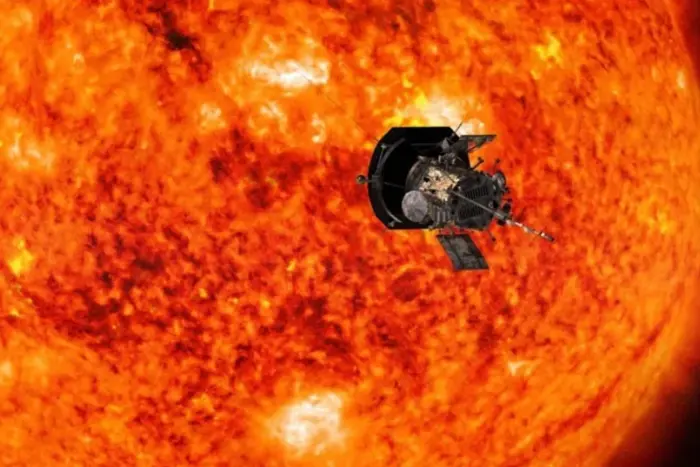NASA Probe Survives Historic Approach to the Sun.


The NASA Parker Solar Probe continues to approach the Sun. It has already become the closest artificial object to our nearest star. The probe is currently at a distance of 6.1 million km from the Sun's surface, the closest distance since its launch. The main goal of this mission is to collect new data about the Sun and study its properties.
The Parker Solar Probe reached this closest distance at a speed of 692,000 km/h and withstood temperatures up to 982 °C. Detailed data about the probe is expected to be obtained by January 1, 2025.
“This approach to the Sun will allow the Parker probe to determine how material heats up to millions of degrees, study the solar wind, and discover how particles gain energy close to the speed of light,” explains Dr. Julia Stawarc from Northumbria University.
Launched in 2018, the Parker Solar Probe has already flown closer to the Sun than any other artificial object in history. To get closer to our star, the spacecraft used the gravitational influence of Venus and flew past it.
Interestingly, during this mission, NASA discovered a lost military base in Greenland that was abandoned half a century ago. Thus, in addition to new discoveries about the Sun, the Parker Solar Probe mission also unveils secrets of the Earth.
Quick Facts
- The Parker Solar Probe has reached its closest distance to the Sun
- Scientists will receive new data about the temperature and composition of the Sun
- The spacecraft withstood temperatures up to 982 °C
- Data on the probe's status will be sent on January 1, 2025
Read also
- The grandfather of the new head of British intelligence MI6 was Ukrainian and had the nickname The Butcher
- The Supreme Court allows Trump to revoke citizenship by birthright
- Language ombudsman Kremin spoke about the promise that the Minister of Culture Tochitsky did not fulfill
- The President signed six decrees to award the title of Hero of Ukraine
- Almost a month was considered missing in action. Let us remember Dmytro Lyashenko
- Constitution Day of Ukraine 2025: greetings in prose, poems and bright postcards










